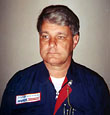|
|
This topic comprises 2 pages: 1 2
|
|
Author
|
Topic: Leaving the exciter on
|
|
|
|
|
|
|
|
|
|
|
|
|
Ray Derrick
Master Film Handler

Posts: 310
From: Sydney, Australia
Registered: Sep 2001
|
 posted 01-11-2002 06:26 PM
posted 01-11-2002 06:26 PM




In fact, for long term reliability it is better to leave your sound rack on all the time rather than turning it off every night. It is the constant heating up and cooling down (causing expansion and contraction of physical materials) that does the most damage to electronic components. Voltage spikes at switch on is the other main factor.As Jeff has indicated, this is well known in the broadcast and televison industries where over half a century of experience has proven that leaving equipment permanently powered on results in the least failures by a huge margin. Any small increase in the power bill is greatly offset by the reduced cost of repairs and replacements.
------------------
Ray Derrick
President
Panalogic Corporation Pty Limited
44 Carrington Road
Castle Hill NSW 2154 Australia
Phone: 61 (0)2 9894 6655 Fax: 61 (0)2 9894 6935
| IP: Logged
|
|
|
|
|
|
|
|
Ray Derrick
Master Film Handler

Posts: 310
From: Sydney, Australia
Registered: Sep 2001
|
 posted 01-12-2002 02:51 AM
posted 01-12-2002 02:51 AM




Firstly I am not suggesting everyone should suddenly start leaving their sound racks on. I was simply stating the facts about electronic reliability. Dust can be a consideration, however in a clean air-conditioned work environment, dust build-up should be minimal. Also many of the popular modern amplifiers have fans that only come on the when the internal temperature reaches a certain level, so they should not come on at all at night when there is no audio. Obviously the decision to leave your sound gear on depends on your operating hours and many other factors. For example if you only show one session a day the increase in your power bill would probably outweigh any benefit. However for a cinema complex that runs from 10am until midnight, it may well be worth considering. And no Ken, I was not suggesting leaving the exciter on all night - lamps are a different kettle of fish. Mark's suggestion of running it at 10% of normal when it is not in use, is a good one, but turn it off when you go home. ------------------
Ray Derrick
President/Chief Engineer
Panalogic Corporation Sydney, Australia
Phone: 61 (0)2 9894 6655 Fax: 61 (0)2 9894 6935
| IP: Logged
|
|
William Bunch
Film Handler

Posts: 87
From: Misawa, Japan
Registered: Nov 2001
|
 posted 01-12-2002 03:14 AM
posted 01-12-2002 03:14 AM





In our theaters we only have one showing on weeknights and two or three on the weekends. We always power down overnight. This is because of the dust problem. Our buildings (being military issue) are not always antiseptic. That and the base Fire Marshall says to.Our sound racks will stay on for the whole evening no matter how many performances probably becase the non-sync system is on the same breaker. Mark brings up a good point about the inside of the glass envelope being deposited with tungsten. But the main issue is filament sag. Whenever I do a Dolbly checkup on our sound opticals the first thing I check for is filament sag which can alter the output considerably. I would think that this sag would be proportional to the amount of total time that the lamp is operated. I have nevr changed an eciter lamp because it was burned out. Only because it was dark, the adhesive base had let go throwing the lamp out of alignment or that the filament was sagging out of specs. I doubt that mono equiped theaters would have to worry much. Bill Bunch
Misawa, Japan
| IP: Logged
|
|
|
|
|
|
Mark Gulbrandsen
Resident Trollmaster

Posts: 16657
From: Music City
Registered: Jun 99
|
 posted 01-12-2002 11:18 AM
posted 01-12-2002 11:18 AM




Willian said "the first thing I check for is filament sag"
Filament sag can also cause the loss of the very top end of the response curve as well. Having the exciter dead on with the actual slit in the slit lens is very important, especially with narrow slit lenses. Of course this is just another of the many reasons for installing reverse scan pickups...........Indeed when I worked in broadcast television back in the late 70's we never did shut stuff down except to either work on it or move it. The only thing that was ever turned off were the beam switches for the studio cameras when they were not being used. Once a week we pulled maintainance on the TTU-100 transmitter and of course it was shut down for that for 6 hours every Sunday night. I never quite got used to having 18kv at 16 amps capacity flowing around me. That is the best job to hold to learn great respect for high voltage!
Mark @ GTS
| IP: Logged
|
|
|
|
All times are Central (GMT -6:00)
|
This topic comprises 2 pages: 1 2
|
Powered by Infopop Corporation
UBB.classicTM
6.3.1.2
The Film-Tech Forums are designed for various members related to the cinema industry to express their opinions, viewpoints and testimonials on various products, services and events based upon speculation, personal knowledge and factual information through use, therefore all views represented here allow no liability upon the publishers of this web site and the owners of said views assume no liability for any ill will resulting from these postings. The posts made here are for educational as well as entertainment purposes and as such anyone viewing this portion of the website must accept these views as statements of the author of that opinion
and agrees to release the authors from any and all liability.
|

 Home
Home
 Products
Products
 Store
Store
 Forum
Forum
 Warehouse
Warehouse
 Contact Us
Contact Us




 Printer-friendly view of this topic
Printer-friendly view of this topic


















